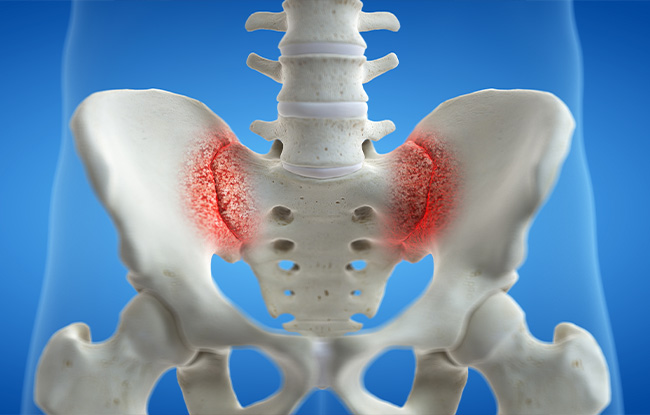Sacroiliac Joint Dysfunction Raleigh
Sacroiliac Joint Dysfunction
The sacroiliac joint is located between the iliac bones and the sacrum, connecting the spine to the hips. These joints provide support and stability and absorb shock while performing strenuous activities. It can happen on one or both joints and starts with the lower back and radiates to the buttocks. The sacroiliac joint commonly causes lower back pain but may not be easily diagnosed. It may also affect the legs, groin, and even feet, and the pain may improve with the movement. However, sleeping or sitting for a long time, standing, putting all weight on one leg, taking significant steps when moving forward, stair climbing, or running can worsen the sacroiliac joint pain. If anyone has such signs or symptoms, our experienced pain management physicians provide personalized treatment based on patient-centered care that can help patients get back to routine.

What Causes Sacroiliac Joint Dysfunction?
Any sudden impact can cause damage to the sacroiliac joints. Traumatic events like accidents, sports injuries, falling on one side of the leg can also trigger the condition. The sacroiliac joints loosen and stretch for childbirth during pregnancy. The weight and changes in the movement can put pressure on the sacroiliac joints.
- Arthritis
- Hip strain or sprain
- Anatomical abnormalities like one leg being shorter than the other
- Complications from hip or spine surgery
- Infection can rarely infect the joint
How is Sacroiliac Joint Dysfunction Diagnosed?
The Sacroiliac joint is one of the largest joints in the body. It’s location makes it hard for healthcare practitioners to spot any issues during a physical exam. It can also be tricky to capture the exact problematic spot for imaging tests. During the assessment, the healthcare practitioner evaluates the patient's medical history, family history, signs or symptoms, etc. Then, perform a physical examination and check the posture and movement along with some tests. Some of the most common tests include:
- Patrick's or FABER's test
- Gaenslen's test
- Distraction test
- Thigh thrust
- Lateral compression
- Sacral thrust
Even imaging tests may be required for lower back and pelvis areas. CT scans can give a more detailed view of the problem, whereas MRI scans use powerful magnetic and radio waves to help rule out any other similar problems. We understand that sometimes pain and other symptoms become severe, leading to discomfort for the patient. Contact Advanced Pain Consultants, PA at (919) 800-0850 for a pain-free and healthy life.
